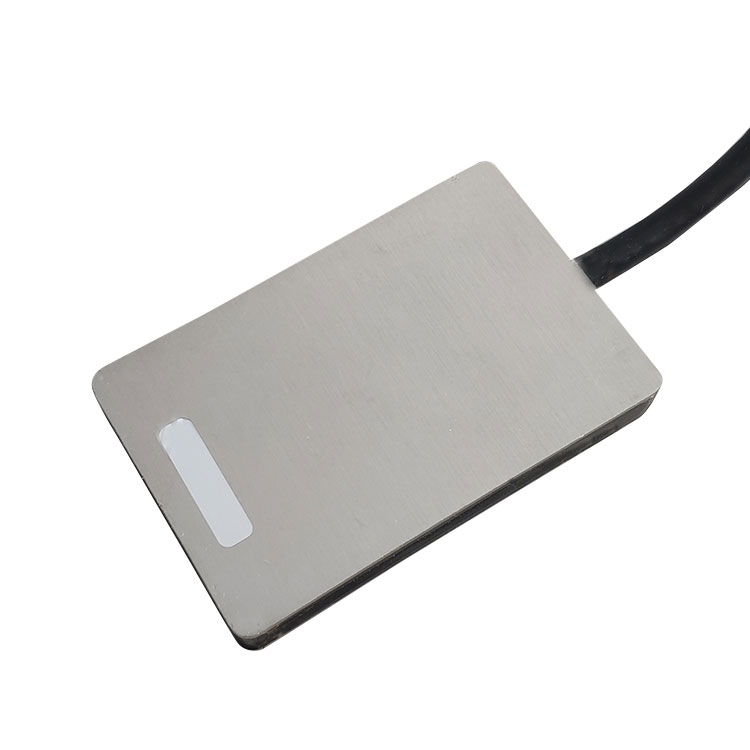Tianqiong Sensor IOT Technology Co., Ltd
Sales Manager:Ms. Emily Wang
Cel,Whatsapp,Wechat:+86 15898932201
Email:info@fengtutec.com
Add:No. 155 Optoelectronic Industry Accelerator, Gaoxin District, Weifang, Shandong, China

Sales Manager:Ms. Emily Wang
Cel,Whatsapp,Wechat:+86 15898932201
Email:info@fengtutec.com
Add:No. 155 Optoelectronic Industry Accelerator, Gaoxin District, Weifang, Shandong, China

Model:FT-TL1
Brand:tianqiong
1.Soil heat flux sensor product overview
Soil heat flux sensor is the leading sensor for soil thermal conductivity, used for heat flux measurements in soil as well as through walls and building envelopes.Soil heat flux sensor, also known as heat flux plate, soil heat flux plate, heat flux meter, etc., is an instrument used to measure heat flux and can be used for internal soil measurement.It is output in the form of a thermopile, which is proportional to the heat flux, and is easy to operate and is especially suitable for measuring the thermal conductivity of soil, building walls and glass walls.The soil heat flux value measured using a heat flux plate buried 2 cm in the soil.During the year, it changes with the seasons.In summer, the soil heat flux is positive, and the existing heat enters the soil layer, and the amount is large; in winter, the soil heat flux is negative, and the heat in the soil is released into the atmosphere, but the amount is small.
2.Scope of application of Soil heat flux sensor
This product can be widely used in the environment, agriculture, forestry, planting, construction, etc.
3.Soil heat flux sensor technical parameters
Supply voltage: □12-24V □5V
Output signal: □ Current type 4~20mA □ 0-2V □ RS485 customized
Measurement range: -200 to 200w/m2
Internal resistance is less than 300Ω
Measurement accuracy: less than 5%
Hot flow calculation formula
Heat flow (w/m2) = coefficient (w*m-2/mv) * output (mv)
Working current: 12V power on about 26mA
4.Functional features of Soil heat flux sensor
1.Small size, fast and accurate measurement
2.Low-power design, adopt reasonable power consumption control mode
3.Stable performance
5.Soil heat flux sensor measurement method
1.Methods for measuring in soil
The plate surface should be placed horizontally in the soil layer perpendicular to the direction of heat flow.The buried depth of the sensor is usually 3-10 cm deep from the natural lower surface.It should be avoided directly on the soil surface as much as possible, because the natural lower surface is not a geometric plane, and the slight fluctuations on the surface will make the sensor readings lose their representation.At the same time, the direct contact of the upper surface of the sensor with air may also cause radiation errors.Usually, a representative area is selected in the observation site and dig a section vertically down with a shovel.
Measure the required depth downward from the soil surface along the section, and then hollow it in the horizontal direction.The size of the heat flow plate can be placed just in place, so that the upper and lower sides of the sensor can maintain good contact with the soil, lead the wires along the section and then backfilling the soil.However, it should be noted that the buried depth of the heat flow plate should be the distance between the center line and the soil surface.
2.Methods of measuring on the wall
First, apply the surface of the heat flow sensor evenly with Vaseline, and attach the heat flow sensor coated with Vaseline to the surface of the wall, so that the wall and the heat flow sensor can make close contact.After staying for a few minutes, the measurement can be started after the heat flow sensor is adapted to the ambient temperature.
The microclimate of farmland refers to the small-scale climatic environment formed by the interaction among the surface air layer, soil layer and crop population in the farmland. It is reflected by the values of agricultural meteorological elements such as radiation, air temperature and humidity, wi...
Wheat seedling conditions are usually classified into strong seedlings, robust seedlings (including first - class and second - class seedlings), and weak seedlings (third - class seedlings). For different seedling conditions, differential management measures need to be taken during key growth stages...
Two - dimensional ultrasonic anemometers can only measure two parameters: wind speed and direction on the horizontal plane. They cannot obtain information about the wind in the vertical direction, such as vertical wind speed or the upward/downward speed of vertical airflows. Therefore, they are only...
The Ultrasonic weather station integrates various sensors with different functions, such as sensors for measuring wind speed and direction, sensors for detecting temperature and humidity, and sensors for recording rainfall, etc., all in the same device. This design makes the structure of the weather...